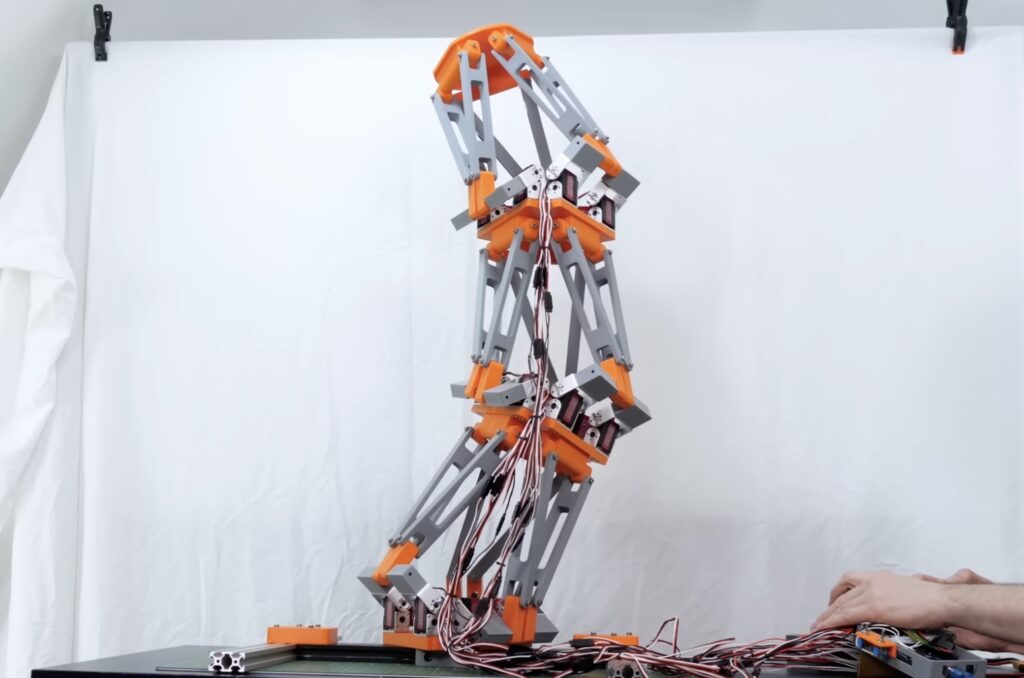Stewart platforms actuate Doc Ock tentacle

Octopus tentacles are, essentially, long continuous muscles — a bit like your tongue. That anatomy gives octopuses incredible dexterity, but it is very difficult to replicate in robots. Artificial “muscle” fiber isn’t very practical yet, which is why roboticists turn to more conventional means of actuation. Cable-driven tentacles are popular, but they require many powerful cable motors. For his newest project, James Bruton took a different approach and utilized Stewart platforms.
Stewart platforms are somewhat common in industrial settings, because they can work with hydraulic pistons that handle a lot of weight. Six linear actuators arranged between two plates let the second plate move at any angle relative to the first plate, with the exact angle depending on the current lengths of the actuators. By chaining together several Stewart platforms, Bruton created a tentacle-like structure with complete freedom in every joint.
The current prototype only has three Stewart platforms, but those are enough to demonstrate the concept. Bruton used servos instead of linear actuators to keep the costs down. An Arduino Mega 2560 board controls those: a total of 18 servo motors. The entire structure is made up of 3D-printed parts.
But expanding this design into a full Doc Ock tentacle (much less four of them) would come with challenges. As with any robot arm, the motors closer to the base experience more load as the weight and the length of the arm increase. Those would probably need to be replaced with beefier models. And with six servos for every joint, even an Arduino Mega 2560 would quickly run out of pins. That could, however, be solved by using multiple Arduino boards or an IO expander.